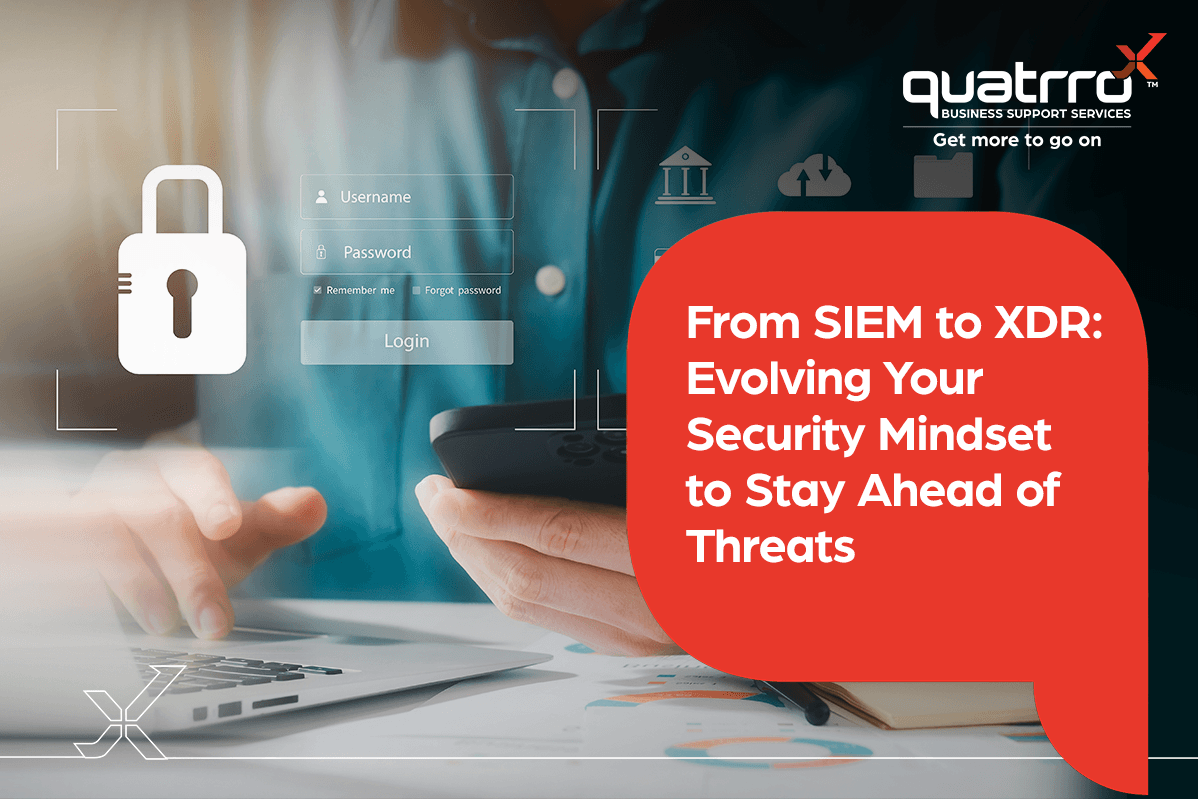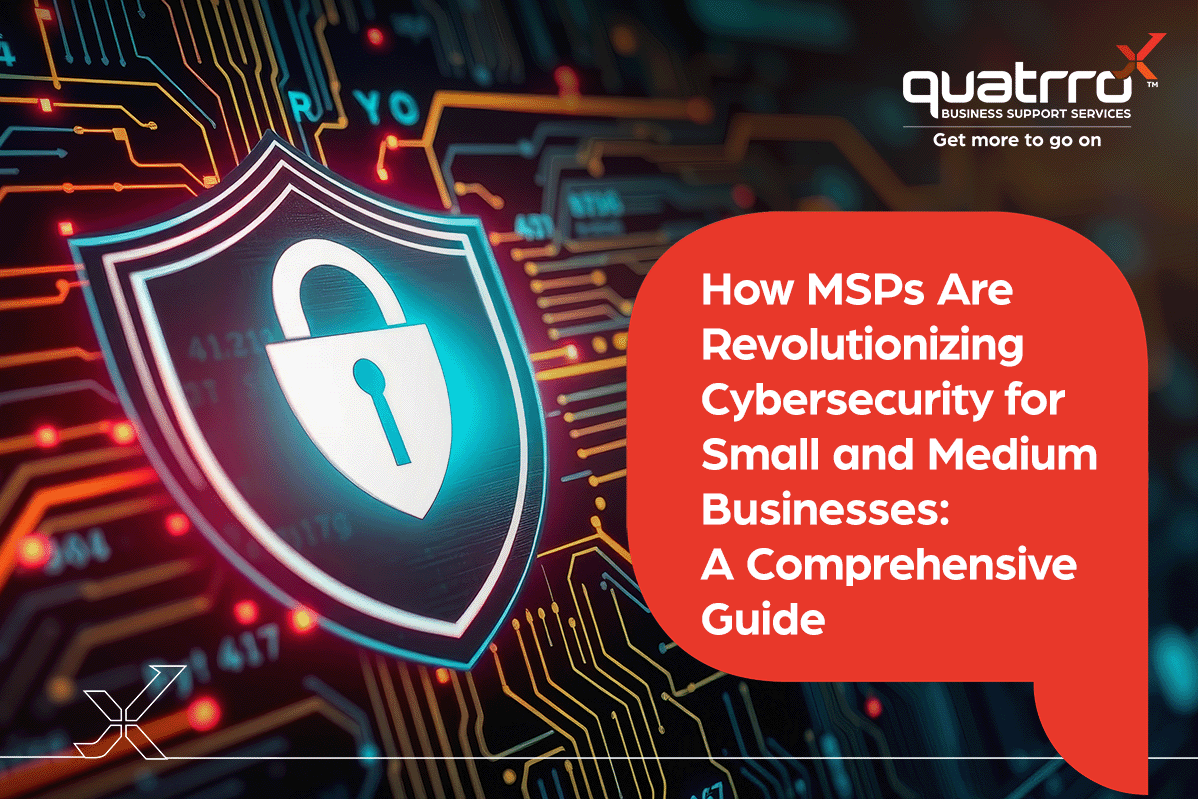Blog Details
From SIEM to XDR: Evolving Your Security Mindset to Stay Ahead of Threats
November 5, 2024

In today’s ever-evolving cyber threat landscape, organizations require robust security solutions that can not only detect and respond to threats but also anticipate them. Security Information and Event Management (SIEM) systems have traditionally served as the foundation e of security operations, by offering a centralized platform for log collection and analysis. However, as cyberattacks become more sophisticated and attackers leverage complex techniques to bypass traditional defenses, SIEMs are increasingly showing their limitations.
One significant drawback of SIEMs is their siloed approach to data collection. SIEMs typically collect logs from security devices like firewalls and intrusion detection systems (IDS). While this provides valuable insights into network activity, it fails to capture the full picture of what’s happening within an organization’s IT infrastructure. Modern cyberattacks often involve lateral movement across the network, and SIEMs, with their limited data scope, can miss these critical indicators of compromise (IOCs). Another challenge with SIEMs is their lack of advanced analytics capabilities. SIEMs rely on predefined rules and signatures to identify threats. This reactive approach is ineffective against novel threats and zero-day attacks. Additionally, the sheer volume of alerts generated by SIEMs can lead to alert fatigue, making it difficult for security analysts to identify the truly critical threats.
SIEM: A Legacy of Log Management
SIEM systems excel at collecting and centralizing logs from various security tools. This provides a single pane of glass for security analysts to monitor events and identify potential security incidents. However, SIEMs have limitations. They often struggle to correlate data from disparate sources, leading to alert fatigue and missed threats. Additionally, SIEMs typically lack advanced analytics capabilities, making it difficult to detect complex threats like Advanced Persistent Threats (APTs).
XDR: The Future of Threat Detection and Response
In contrast, Extended Detection and Response (XDR) security platforms go beyond traditional log management. It ingests data from a wider range of security tools, including endpoints, networks, and cloud environments. This comprehensive view allows XDR to identify sophisticated attack patterns that might go unnoticed by a SIEM. Here’s how XDR elevates security posture:
At Quatrro, we understand the critical need for advanced threat detection and response solutions. Our team of cybersecurity experts possesses deep knowledge of XDR technology and its potential to revolutionize your organization’s security posture.
Here’s what sets us apart:
Contact Quatrro today to discuss how XDR can revolutionize your organization’s security strategy.
One significant drawback of SIEMs is their siloed approach to data collection. SIEMs typically collect logs from security devices like firewalls and intrusion detection systems (IDS). While this provides valuable insights into network activity, it fails to capture the full picture of what’s happening within an organization’s IT infrastructure. Modern cyberattacks often involve lateral movement across the network, and SIEMs, with their limited data scope, can miss these critical indicators of compromise (IOCs). Another challenge with SIEMs is their lack of advanced analytics capabilities. SIEMs rely on predefined rules and signatures to identify threats. This reactive approach is ineffective against novel threats and zero-day attacks. Additionally, the sheer volume of alerts generated by SIEMs can lead to alert fatigue, making it difficult for security analysts to identify the truly critical threats.
SIEM: A Legacy of Log Management
SIEM systems excel at collecting and centralizing logs from various security tools. This provides a single pane of glass for security analysts to monitor events and identify potential security incidents. However, SIEMs have limitations. They often struggle to correlate data from disparate sources, leading to alert fatigue and missed threats. Additionally, SIEMs typically lack advanced analytics capabilities, making it difficult to detect complex threats like Advanced Persistent Threats (APTs).
XDR: The Future of Threat Detection and Response
In contrast, Extended Detection and Response (XDR) security platforms go beyond traditional log management. It ingests data from a wider range of security tools, including endpoints, networks, and cloud environments. This comprehensive view allows XDR to identify sophisticated attack patterns that might go unnoticed by a SIEM. Here’s how XDR elevates security posture:
- Advanced Analytics: XDR leverages machine learning and behavioral analytics to detect anomalies and suspicious activities that might escape human analysts. Machine learning algorithms can analyze vast amounts of data to identify subtle changes in user behavior, network traffic patterns, or file access attempts that could indicate a potential attack. Behavioral analytics helps to identify activities that deviate from established baselines, even if they don’t trigger a predefined rule.
- Threat Hunting: XDR empowers security teams to proactively hunt for threats lurking within the network. XDR provides security analysts with the tools and capabilities to search for indicators of compromise (IOCs) and other signs of malicious activity across all collected data. This allows security teams to identify and neutralize threats before they can cause significant damage.
- Faster Incident Response: By providing a consolidated view of security data from across the IT infrastructure, XDR streamlines incident response by allowing teams to quickly identify the scope and root cause of an attack. XDR can correlate events from various sources to provide a timeline of the attack, helping security analysts to understand how the attacker gained access, what data was compromised, and what actions need to be taken to contain the threat and remediate the situation.
At Quatrro, we understand the critical need for advanced threat detection and response solutions. Our team of cybersecurity experts possesses deep knowledge of XDR technology and its potential to revolutionize your organization’s security posture.
Here’s what sets us apart:
- XDR Implementation and Management: We can implement your XDR security platform, ensuring seamless integration with your existing security infrastructure.
- Threat Hunting Expertise: Our team of seasoned threat hunters can leverage the power of XDR to proactively identify and neutralize hidden threats.
- Security Orchestration and Automation Response (SOAR): We integrate XDR with SOAR solutions to automate incident response workflows, saving valuable time and resources.
Contact Quatrro today to discuss how XDR can revolutionize your organization’s security strategy.
Latest Insights
Related Blogs
Contact Us








